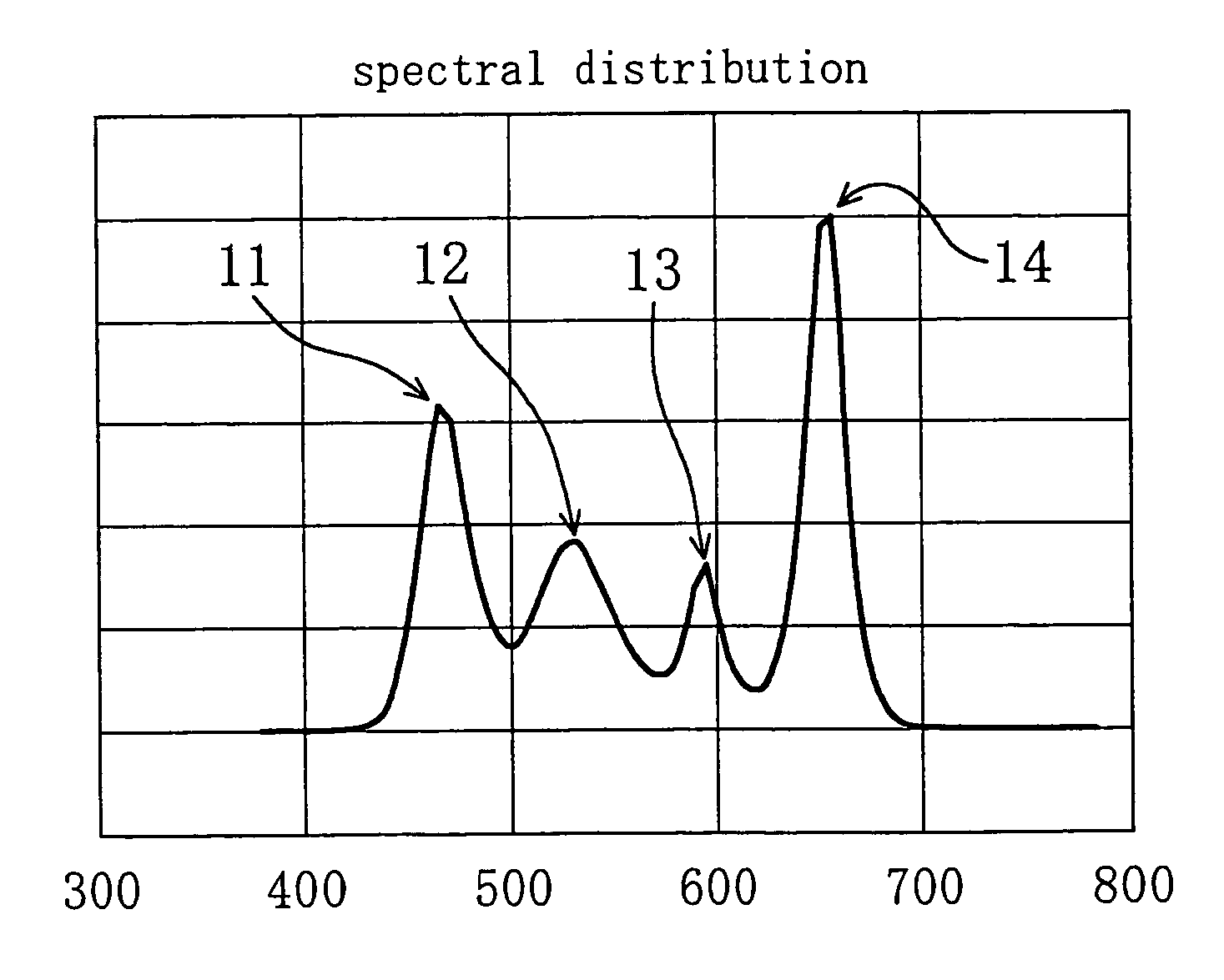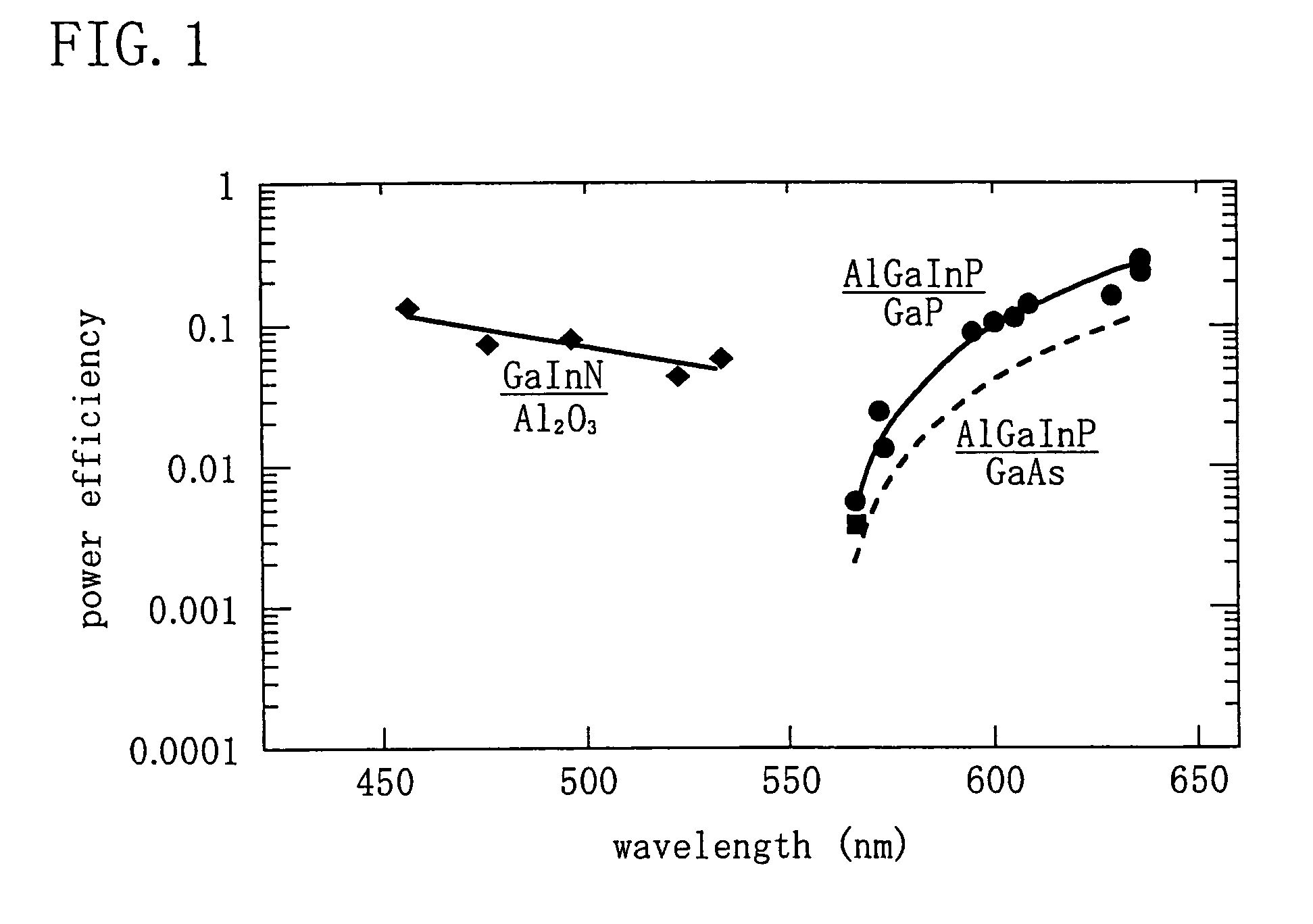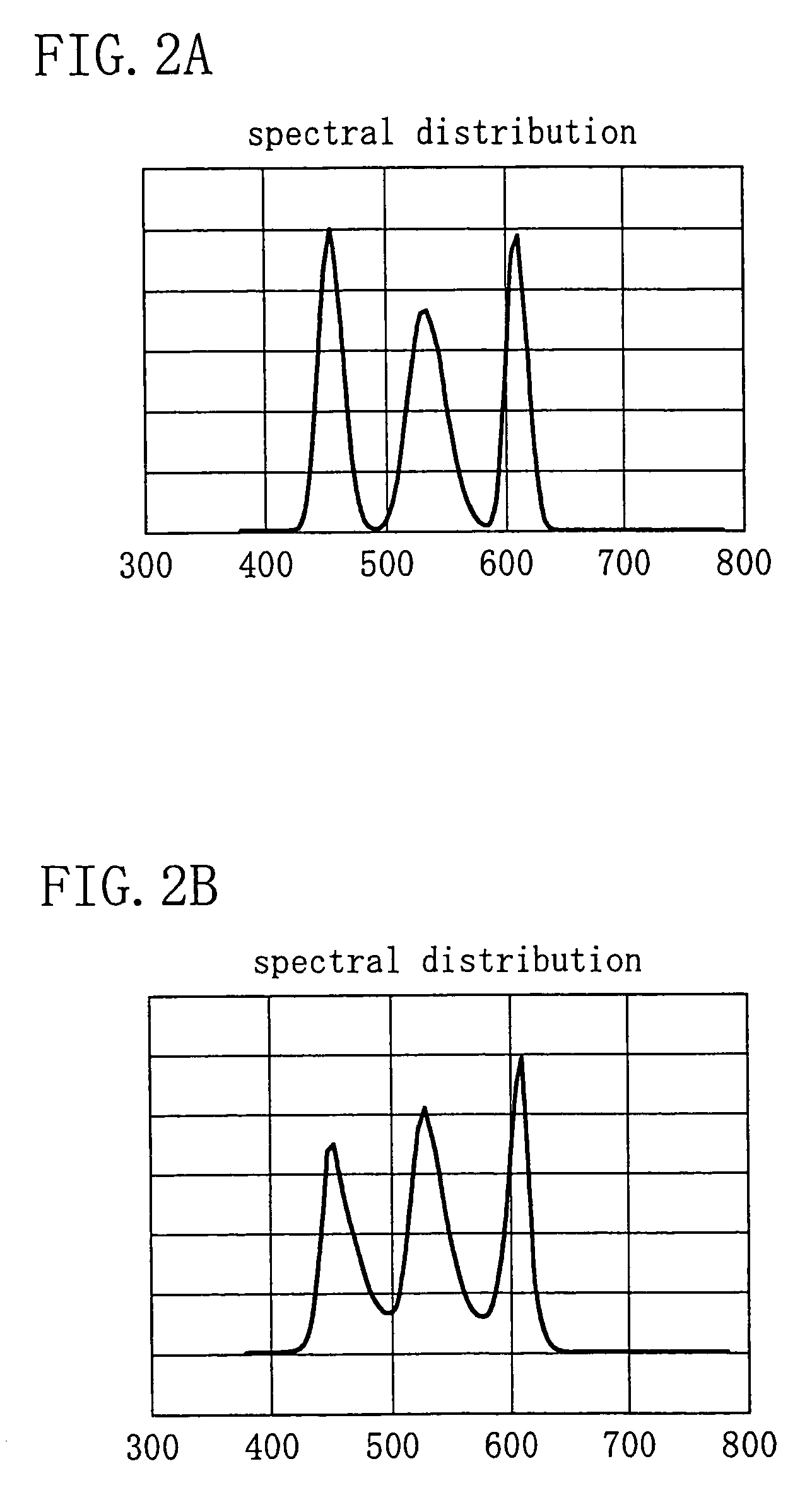Light source having blue, blue-green, orange and red LED's
a technology of led light source and led light source, which is applied in the field of illumination light source, can solve the problems that the use of led light source for illumination purposes has not been researched and developed sufficiently, and achieves the effect of high color rendering performance and high efficiency
- Summary
- Abstract
- Description
- Claims
- Application Information
AI Technical Summary
Benefits of technology
Problems solved by technology
Method used
Image
Examples
embodiment 1
[0069]An illumination light source according to Embodiment 1 of the present invention will be described with reference to FIGS. 4 to 6B. FIG. 4 schematically illustrates the structure of an LED illumination light source according to Embodiment 1, and FIG. 5 schematically illustrates the spectral distribution of the illumination light source.
[0070]The illumination light source shown in FIG. 4 includes four types of LEDs (11, 12, 13 and 14). More specifically, the illumination light source of this embodiment includes a blue LED 11 emitting blue light, a blue-green LED 12 emitting blue-green light, an orange LED 13 emitting orange light and a red LED 14 emitting red light.
[0071]The blue LED 11 and the blue-green LED 12 are made of, for example, GaN-based compounds (which includes not only GaN, but also InGaN, AlGaN and AlInGaN, i.e., given by the general formula IniGajAlkN, where 0≦i, 013 and the red LED 14 are made of AlInGaP-, GaAsP- or GaAlAs-based compounds, for example. Commercial...
embodiment 2
[0088]Embodiment 2 relates to the optimization of the combinations of the blue LED 11, the blue-green LED 12, the orange LED 13 and the red LED 14. In Embodiment 1, the illumination light source includes four different types of LEDs (11 through 14), so that it can achieve a better color reproducibility than conventional illumination light sources using three different types of LEDs, as described above. However, when evaluating the color reproducibility of illumination light sources made of LEDs, the evaluation method for the color reproducibility is problematic. The following is an explanation of this problem.
[0089]Compared to the emission of fluorescent lamps, light bulbs and high intensity discharge (HID ) lamps, which are used conventionally as illumination light sources, the emission of LEDs has a tendency of rendering an illuminated object in very brilliant colors. But this excellent color rendering performance of the LED lamp cannot be evaluated properly with the conventional ...
embodiment 3
[0123]An illumination light source according to Embodiment 3 of the present invention is described with reference to FIG. 12. FIG. 12 schematically illustrates the spectral distribution of the LED illumination light source according to this embodiment.
[0124]The LED illumination light source of this embodiment includes not only the blue LED 11, the blue-green LED 12, the orange LED 13 and the red LED 14 of the foregoing Embodiments 1 and 2, but also a phosphor 15 that emits light when excited by the emissions of the LEDs. The emission spectrum of the phosphor 15 is broader than the emission spectra of the LEDs 11 through 14. Thus, with the phosphor 15, the emission colors of the LEDs 11 through 14 can be mixed favorably. Moreover, when the phosphor 15 is provided around the LEDs 11 through 14, the emission colors of the LEDs 11 through 14 can be mixed much more favorably by dispersion with the phosphor 15.
[0125]The phosphor 15 of this embodiment is excited by the emission of the blue...
PUM
 Login to View More
Login to View More Abstract
Description
Claims
Application Information
 Login to View More
Login to View More - R&D
- Intellectual Property
- Life Sciences
- Materials
- Tech Scout
- Unparalleled Data Quality
- Higher Quality Content
- 60% Fewer Hallucinations
Browse by: Latest US Patents, China's latest patents, Technical Efficacy Thesaurus, Application Domain, Technology Topic, Popular Technical Reports.
© 2025 PatSnap. All rights reserved.Legal|Privacy policy|Modern Slavery Act Transparency Statement|Sitemap|About US| Contact US: help@patsnap.com



